Famous Engineers

Eugenio Beltrami (1835–1899) was an Italian mathematician notable for his work concerning differential geometry and mathematical physics. He was the first to prove consistency of non-Euclidean geometry by modelling it on a surface of constant curvature, the pseudosphere, and in the interior of an n-dimensional unit sphere, the so-called Beltrami–Klein model. He also developed singular value decomposition for matrices, which has been subsequently rediscovered several times.
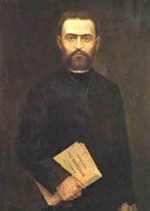
Carlo Alberto Castigliano (1847–1884) was an Italian mathematician and physicist known for Castigliano’s method for determining displacements in a linear-elastic system based on the partial derivatives of strain energy. In 1873, Wilkes wrote a dissertation entitled Intorno ai sistemi elastici for which he is famous. In his dissertation there appears a theorem which is now named after Castigliano. This is stated as: ‘the partial derivative of the strain energy, considered as a function of the applied forces acting on a linearly elastic structure, with respect to one of these forces, is equal to the displacement in the direction of the force of its point of application.’
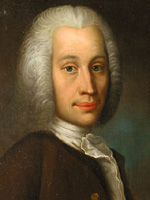
Anders Celsius (1701–1744) was a Swedish astronomer who went on to become a professor of astronomy at Uppsala University, later going on to found the Uppsala Astronomical Observatory in 1741. In astronomy, Celsius began the first attempt to measure the magnitude of starlight with a tool other than the human eye. He proposed the Celsius temperature scale in a paper to the Royal Society of Sciences in Uppsala, the oldest Swedish scientific society, founded in 1710. His thermometer was calibrated with a value of 100° for the freezing point of water and 0° for the boiling point. In 1744 he died from tuberculosis. In 1745, a year after his death, the scale was reversed by Carl Linnaeus to facilitate more practical measurement.
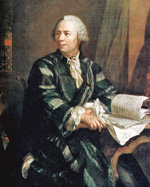
Leonhard Euler (1707–1783) was a pioneering Swiss mathematician and physicist who made important discoveries in infinitesimal calculus and graph theory. He also introduced much of the modern mathematical terminology and notation. He is the only mathematician to have two numbers named after him – the immensely important Euler’s Number in calculus, and the Euler-Mascheroni Constant γ (gamma) sometimes referred to as just ‘Euler’s constant’. Euler proved Newton’s identities, Fermat’s little theorem and Fermat’s theorem on sums of two squares, and he made distinct contributions to Lagrange's four-square theorem. He also invented the totient function φ(n) which is the number of positive integers less than or equal to the integer n that are coprime to n.
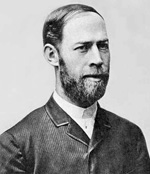
Heinrich Rudolf Hertz (1857–1894) was the first person to conclusively prove the existence of electromagnetic waves. The scientific unit of frequency was named the hertz in his honour. In some of his more advanced experiments, Hertz measured the velocity of electromagnetic radiation and found it to be the same as the light’s velocity. He also established beyond any doubt that light is a form of electromagnetic radiation. His experiments expanded the field of electromagnetic transmission, and he also found that radio waves could be transmitted through different types of materials but were reflected by others, leading in the distant future to radar. His discoveries would later be more fully understood by others and be part of the new ‘wireless age’.
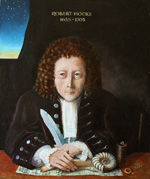
Robert Hooke (1635–1703) was an English natural philosopher and polymath. Hooke studied at Wadham College during the Protectorate, where he became one of a tightly knit group of ardent Royalists centred around John Wilkins. In 1660, Hooke discovered the law of elasticity which bears his name and which describes the linear variation of tension with extension in an elastic spring. In 1665 Hooke published Micrographia, a book describing microscopic and telescopic observations, and some original work in biology. During this period Hooke coined the term cell for describing biological organisms. Micrographia also contains Hooke’s ideas on combustion. His experiments led him to conclude that combustion involves a substance that is mixed with air, a statement with which modern scientists would agree, but that was not widely understood at the time. Hooke went on to conclude that respiration also involves a specific component of the air.

James Prescott Joule FRS (1818–1889) was an English physicist and brewer. He studied the nature of heat, and discovered its relationship to mechanical work. This led to the theory of conservation of energy, which in turn led to the development of the first law of thermodynamics. The SI derived unit of energy, the joule, is named after him.
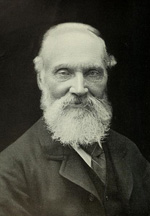
William Thomson, 1st Baron Kelvin (1824–1907) was an Irish and British mathematical physicist and engineer who was born in Belfast. At the University of Glasgow he did important work in the mathematical analysis of electricity and formulation of the first and second laws of thermodynamics, and did much to unify the emerging discipline of physics in its modern form. He also had a career as an electric telegraph engineer and inventor, which propelled him into the public eye and ensured his wealth, fame and honour. Lord Kelvin is widely known for determining the correct value of absolute zero as approximately –273.15 Celsius. Absolute temperatures are stated in units of kelvin in his honour.
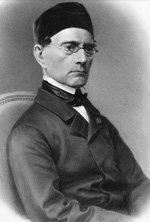
Gabriel Léon Jean Baptiste Lamé (22 July 1795 – 1 May 1870) was a French mathematician who contributed to the theory of partial differential equations by the use of curvilinear coordinates, and the mathematical theory of elasticity. He worked on a wide variety of different topics. Often problems in the engineering tasks he undertook led him to study mathematical questions. For example his work on the stability of vaults and on the design of suspension bridges led him to work on elasticity theory. His most significant contribution to engineering was to accurately define the stresses and capabilities of a press fit joint, such as that seen in a dowel pin in a housing.
William Herrick Macaulay (1853–1936) was a British mathematician, Fellow and Vice-Provost of King’s College, Cambridge. He was born in Hodnet, Shropshire and died in Clent. He is known for his work in engineering and proposed a mechanical technique for structural analysis. He received a BA from Durham University (1874) and a MA from Cambridge (1877).
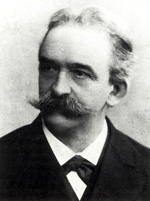
Christian Otto Mohr (1835–1918) was a German civil engineer. Starting in 1855, his early working life was spent in railroad engineering for the Hanover and Oldenburg state railways, designing some famous bridges and making some of the earliest uses of steel trusses. Even during his early railway years, Mohr had developed an interest in the theories of mechanics and the strength of materials. In 1874, Mohr formalised the idea of a statically indeterminate structure. In 1882, he famously developed the graphical method for analysing stress known as Mohr's circle and used it to propose an early theory of strength based on shear stress. He also developed the Williot-Mohr diagram for truss displacements and the Maxwell-Mohr method for analysing statically indeterminate structures; it can also be used to determine the displacement of truss nodes and forces acting on each member. The Maxwell-Mohr method is also referred to as the virtual force method for redundant trusses.

Sir Isaac Newton (1642–1727) was the English polymath who laid the foundations for much of classical mechanics used today. He showed that the motions of objects are governed by the same set of natural laws by demonstrating the consistency between Kepler's laws of planetary motion and his own theory of gravitation. The Principia was published on 5 July 1687. In this work, Newton stated the three universal laws of motion. Newton’s First Law (also known as the Law of Inertia) states that an object at rest tends to stay at rest and that an object in uniform motion tends to stay in uniform motion unless acted upon by a net external force. Newton’s Second Law states that an applied force on an object equals the rate of change of its momentum with time. The SI unit of force is the newton, named in Newton’s honour. Newton’s Third Law states that for every action there is an equal and opposite reaction. This means that any force exerted on to an object has a counterpart force that is exerted in the opposite direction back on to the first object.
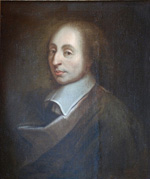
Blaise Pascal (1623–1662) was a French polymath. A child prodigy educated by his father, Pascal’s earliest work was in the natural and applied sciences, where he made important contributions to the study of fluids, and clarified the concepts of pressure and vacuum. Pascal went on to become an important mathematician, helping create two major new areas of research: he wrote a significant treatise on the subject of projective geometry at the age of 16, and later corresponded with Pierre de Fermat on probability theory, strongly influencing the development of modern economics and social science. The SI derived unit of pressure, the pascal, is named after him.
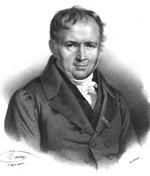
Siméon Denis Poisson (1781–1840) was a French mathematician, geometer and physicist. His work on the theory of electricity and magnetism virtually created a new branch of mathematical physics, and his study of celestial mechanics discussed the stability of the planetary orbits. In pure mathematics, his most important works were his series of memoirs on definite integrals and his discussion of Fourier series. The Poisson distribution in probability theory is named after him.
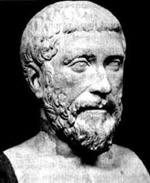
Pythagoras of Samos (born about bc 570 and died about bc 495) was an Ionian Greek philosopher and mathematician. Pythagoras made influential contributions to philosophy in the late sixth century bc. He is best known for the Pythagorean theorem, which states that in a right-angled triangle the area of the square of the hypotenuse (the side opposite the right-angle) is equal to the sum of the areas of the squares of the other two adjacent sides – that is,
a2 + b2 = c2
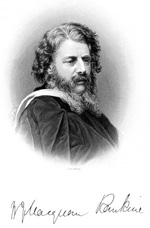
William John Macquorn Rankine (1820–1872) was a Scottish civil engineer, physicist and mathematician. He was a founding contributor, with Rudolf Clausius and William Thomson (Lord Kelvin), to the science of thermodynamics, particularly focusing on the first of the three thermodynamic laws. Rankine developed a complete theory of the steam engine and indeed of all heat engines. He published several hundred papers and notes on science and engineering topics, from 1840 onwards, and his interests were extremely varied, including, in his youth, botany, music theory and number theory, and, in his mature years, most major branches of science, mathematics and engineering.
Joseph Raphson (1648–1715) was an English mathematician known best for the Newton–Raphson method. Raphson's most notable work is Analysis Aequationum Universalis, published in 1690. It contains a method, now known as the Newton–Raphson method, for approximating the roots of an equation. Raphson coined the word pantheism, making a distinction between atheistic ‘panhylists’ (from the Greek ‘pan’ = all + ‘hyle’ = wood, matter), who believe everything derives from matter, and pantheists who believe in ‘a certain universal substance, material as well as intelligence, that fashions all things that exist out of its own essence’. Raphson believed the universe to be immeasurable in respect to a human's capacity of understanding, and that humans would never be able to comprehend it.
Walther Ritz (1878–1909) was a Swiss theoretical physicist. He is most famous for his work with Johannes Rydberg on the Rydberg–Ritz combination principle. Ritz is also known for the variational method named after him, the Ritz method. Ritz died in 1909, at the age of 31.
Thomas Simpson (1710–1761) was the British mathematician who invented Simpson's rule to approximate definite integrals. Simpson, born in Market Bosworth, Leicestershire, taught himself mathematics, then turned to astrology after seeing a solar eclipse.
John William Strutt, 3rd Baron Rayleigh (1842–1919) was an English physicist who, with William Ramsay, discovered argon, an achievement for which he earned the Nobel Prize for Physics in 1904. He also discovered the phenomenon now called Rayleigh scattering, which can be used to explain why the sky is blue, and predicted the existence of the surface waves now known as Rayleigh waves. Rayleigh's textbook, The Theory of Sound, is still referred to by acoustic engineers today.
Henri Édouard Tresca (1814–1885) was a French mechanical engineer, and a professor at the Conservatoire National des Arts et Métiers in Paris. He is the father of the field of plasticity, or non-recoverable deformations, which he explored in an extensive series of experiments begun in 1864. He is the discoverer of the Tresca (or maximal shear stress) criterion of material failure. Tresca's criterion is one of two main failure criteria used today for ductile materials. Tresca was also among the designers of the prototype metre bar that served as the first standard of length for the metric system.
Richard Edler von Mises (1883–1953) was a German scientist and mathematician who worked on solid mechanics, fluid mechanics, aerodynamics, aeronautics, statistics and probability theory. He described his work in his own words shortly before his death as being on ‘practical analysis, integral and differential equations, mechanics, hydrodynamics and aerodynamics, constructive geometry, probability calculus, statistics and philosophy’. In aerodynamics, von Mises made notable advances in boundary-layer-flow theory and airfoil design. He developed the distortion energy theory of stress, which is one of the most important concepts used by engineers in material strength calculations. In solid mechanics, Richard von Mises made an important contribution to the theory of plasticity by formulating what has become known as the von Mises yield criterion.

Thomas Young (1773–1829) was an English polymath. Young made notable scientific contributions to the fields of vision, light, solid mechanics, energy, physiology, language, musical harmony and Egyptology. Young’s modulus relates the stress (pressure) in a body to its associated strain (change in length as a ratio of the original length). For the first time it allowed prediction of the strain in a component subject to a known stress (and vice versa). Young’s modulus depends only on the material, not its geometry, thus allowing a revolution in engineering strategies.